Chromatography is used to separate the given components of a mixture that have differing solubilities in a solvent.
It can be used to separate coloured substances in a mixture, like the inks in this investigation.
You'll need to know the terminology.
A solvent is a liquid that dissolves a solute.A solute is a substance which dissolves in a liquid.A solution is what is made when a solute dissolves in a solvent.And a substance that can be dissolved is described as soluble.
There are two phases in chromatography.The stationary phase, when the molecules can't move. This is when the molecules are on the chromatography paper, which is a solid.And the mobile phase, when the molecules can move. This is when the molecules are in the solvent, in this case water, which is a liquid.
Molecules in the substances that are more soluble in the mobile phase and less attracted to the stationary phase, will move further up the paper, like this red ink. When the substance you want to separate is not soluble in water, like this permanent marker pen, you can use a different solvent, for example alcohol. For safety you may want to use a lid when using alcohol because alcohols are flammable.
To make sure you get a valid result, look out for these common mistakes when setting up your experiment:
Drawing the origin line in pen - it'll move up the paper with the other inks, so use a pencil instead.
Or starting with the solvent level above the origin line.
When you're confident you have a valid example, use your chromatogram to work out the Rf value of the dye in the ink. To do this use the formula:Rf equals distance travelled by substance divided by distance travelled by solvent.
In this experiment the dye travelled 31mm and the solvent travelled 44mm.
Rf equals 31 divided by 44, which is 0.7
If your value comes to more than one, you probably have your numbers the wrong way round.
Finally, remember that when you change the solvent, the Rf value of the substance will change too.
Video summary
A demonstration of the key points of the required practical to investigate the separation of substances using paper chromatography for GCSE chemistry and combined science.
This short film begins by introducing some of the key terminology linked with chromatography to support understanding of the science behind the process. It also demonstrates how to avoid common mistakes with this investigation and how to calculate Rf values.
Students are likely to have carried out chromatography at KS3 but may not have calculated Rf values.
Teacher Notes
The practical allows development of Apparatus & Techniques Chemistry 4 ().
It is likely that students will have carried out chromatography at KS3 and possibly even at KS2.
This short film could be used before students’ own investigations to help to support understanding of the science behind the practical and to highlight the key terminology linked with the process.
Alternatively, it could be used after an investigation to revisit and check understanding of the science behind the practical.
As the film highlights some common mistakes made when carrying out chromatography, it could be used to ensure that students are aware of the common pitfalls and, more importantly, why these mistakes affect the validity of results.
Points for discussion:Even where the process of chromatography is familiar to students and they can recall the method, questions linked with the science behind the practical are often challenging.
The terminology linked with chromatography - for example solution, solvent, solute, soluble, mobile phase, and stationary phase - can be confusing to students and these are highlighted in the film.
There is a focus on the common mistakes made when carrying out chromatography and how to avoid them.
Finally, the film also demonstrates how to calculate Rf values, another aspect of chromatography that students can find challenging.
Suggested activities:If students are struggling to identify and articulate the issues linked with the common mistakes, it may be beneficial to allow them to make those mistakes in their own investigation and explore how that affects results.
Students should practice calculating Rf values. Calculating the Rf value of the same substance in a different solvent will help to reinforce the idea that the Rf varies dependent on the solvent used.
Suitable for teaching chemistry and combined science at Key Stage 4 and GCSE in England, Wales and Northern Ireland, and at National 4 and 5 in Scotland.
Investigate osmosis in plant tissue. video
A demonstration of the key points of the required practical to investigate osmosis in plant tissue for GCSE biology and combined science.
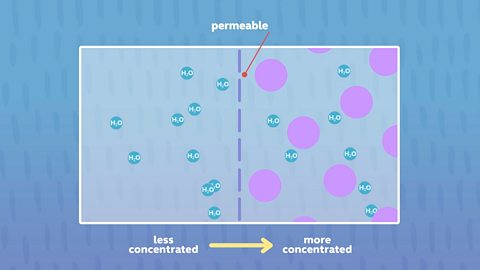
Investigate the effect of pH on enzyme activity. video
A demonstration of the key points of the required practical to investigate the effect of pH on enzyme activity for GCSE biology and combined science.
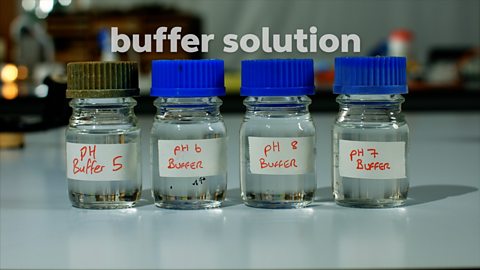
Investigate the effect of light intensity on the rate of photosynthesis. video
A demonstration of the key points of the required practical to investigate the effect of light intensity on the rate of photosynthesis for GCSE biology and combined science.
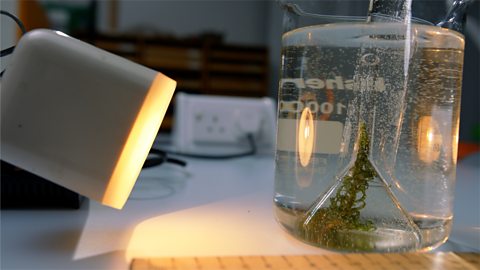
Investigate electrolysis of aqueous solutions using inert electrodes. video
A demonstration of the key points of the required practical to investigate electrolysis of aqueous solutions using inert electrodes for GCSE chemistry and combined science.

Prepare a pure, dry sample of a soluble salt from an insoluble oxide. video
A demonstration of the key points of the required practical to prepare a pure, dry sample of a soluble salt from an insoluble oxide for GCSE chemistry and combined science.

Investigate the I–V characteristics of circuit elements such as a filament lamp, diode and resistor at constant temperature. video
A demonstration of the key points of the required practical to investigate the I-V characteristics of circuit elements such as a filament lamp, diode and resistor at constant temperature.
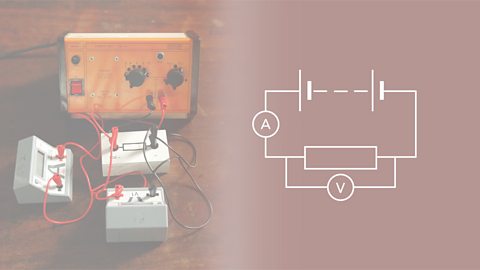
Investigate the effect of varying force or mass on the acceleration of an object. video
A demonstration of key points of the required practical to investigate the effect of varying force or mass on the acceleration of an object for GCSE physics and combined science.
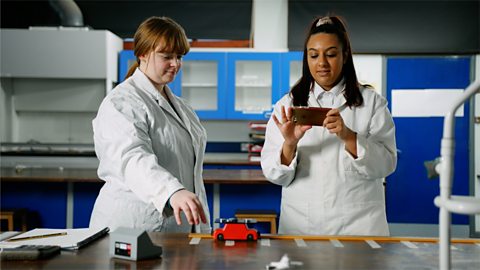
Measure the frequency, wavelength and speed of waves in a ripple tank video
A demonstration of the key points of the required practical to measure the frequency, wavelength and speed of waves in a ripple tank for GCSE physics and combined science.
